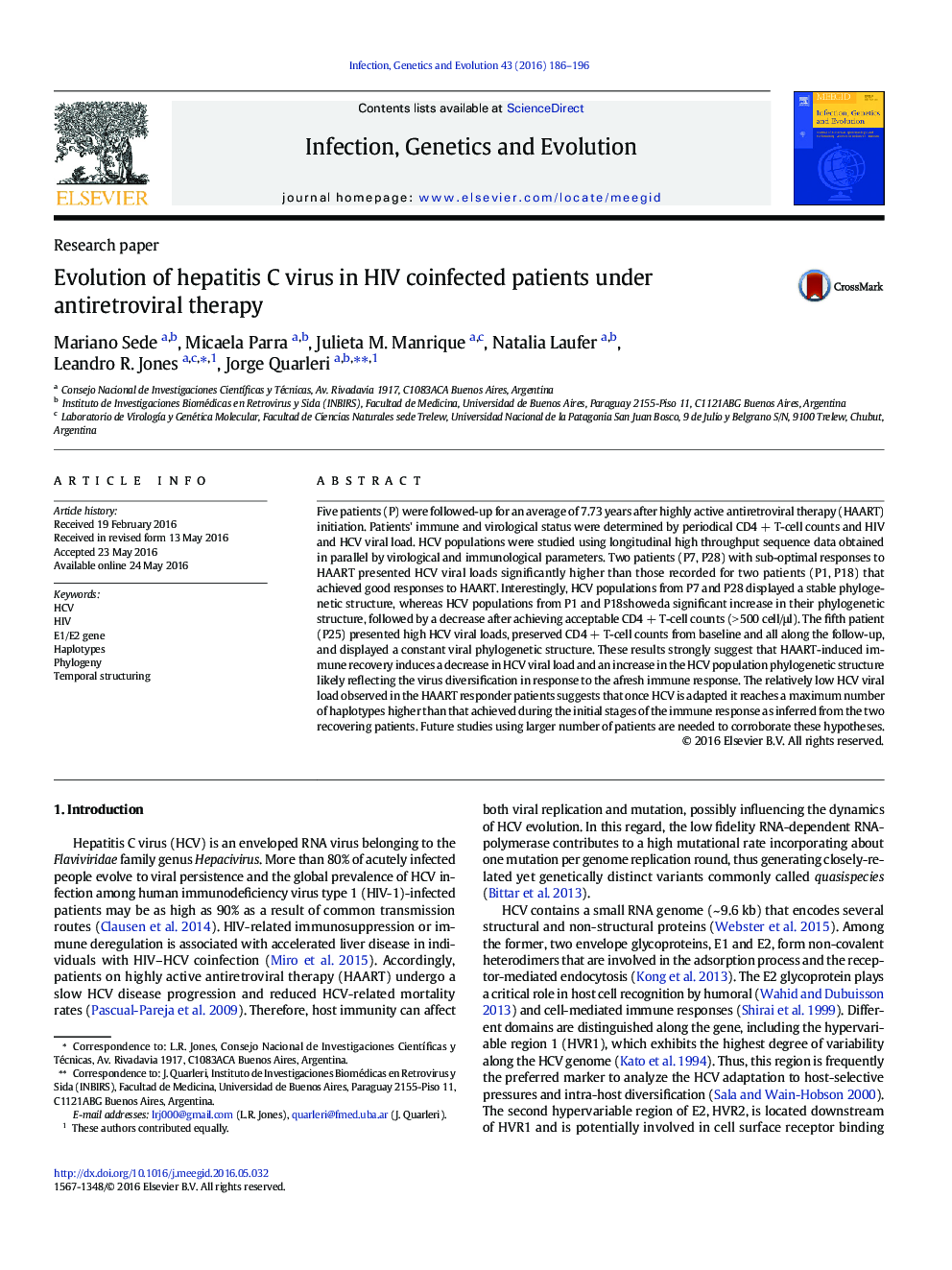| کد مقاله | کد نشریه | سال انتشار | مقاله انگلیسی | نسخه تمام متن |
|---|---|---|---|---|
| 2822956 | 1570160 | 2016 | 11 صفحه PDF | دانلود رایگان |

• HAART-induced CD4 + T-cell recovery shapes intra-host HCV evolution.
• A host-dependent HCV temporal structuring phenomenon is proposed.
• The positive selection pressure on the E2-HVR1 domain shows dissimilar magnitudes.
• At HCV E2 gene, the occurrence of intra-subtype recombination is uncommon.
Five patients (P) were followed-up for an average of 7.73 years after highly active antiretroviral therapy (HAART) initiation. Patients' immune and virological status were determined by periodical CD4 + T-cell counts and HIV and HCV viral load. HCV populations were studied using longitudinal high throughput sequence data obtained in parallel by virological and immunological parameters. Two patients (P7, P28) with sub-optimal responses to HAART presented HCV viral loads significantly higher than those recorded for two patients (P1, P18) that achieved good responses to HAART. Interestingly, HCV populations from P7 and P28 displayed a stable phylogenetic structure, whereas HCV populations from P1 and P18showeda significant increase in their phylogenetic structure, followed by a decrease after achieving acceptable CD4 + T-cell counts (> 500 cell/μl). The fifth patient (P25) presented high HCV viral loads, preserved CD4 + T-cell counts from baseline and all along the follow-up, and displayed a constant viral phylogenetic structure. These results strongly suggest that HAART-induced immune recovery induces a decrease in HCV viral load and an increase in the HCV population phylogenetic structure likely reflecting the virus diversification in response to the afresh immune response. The relatively low HCV viral load observed in the HAART responder patients suggests that once HCV is adapted it reaches a maximum number of haplotypes higher than that achieved during the initial stages of the immune response as inferred from the two recovering patients. Future studies using larger number of patients are needed to corroborate these hypotheses.
Journal: Infection, Genetics and Evolution - Volume 43, September 2016, Pages 186–196